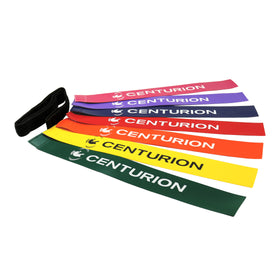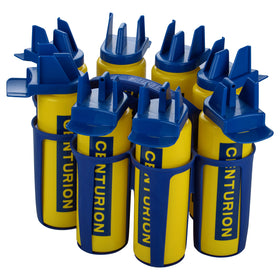Rugby Blog
History of London Irish
by Leana Kell
London Irish RFC is one of the oldest and most famous rugby clubs in the UK. Based in Sunbury, the London Irish currently compete in the top division of the Aviva Premiership and, this season, at the time of writing they are currently 12th place in the league.
The London Irish won their first major trophy in 2002 competing for what is now known as the Anglo-Welsh Cup . One of their biggest achievements was reaching the final of the 2009 Guinness Premiership (as it was known then) at Twickenham, but unfortunately this ended in a loss of 10-9 to the Leicester Tigers.
Below, Centurion takes a look at the history of the London Irish RFC and how they became the famous rugby club we know and love today.
Early History
At the turn of the 19th century, there was a growing need in London for a sporting club for Irishmen, to emulate clubs that had already formed in other home countries such as London Scottish in 1878 and London Welsh in 1895 to offer countrymen a "home from home" in London. As such, in 1898, the London Irish Football Club was formed, consisting of an exceptional mix of politicians, lawyers and business men who collectively shared a passion for Rugby.
On 1 October 1898, London Irish played their first game against Hammersmith at Herne Hill Athletic Ground in south-east London and won the game 8-3. This marked the start of a golden era for the newly formed club. Furthermore, the arrival of veterinary surgeon, Louis Magee, to London had a huge influence - not only did Magee represent Ireland 27 times between 1895 and 1904, he proved vital in attracting other key players to the club.
Thanks to Louis Magee's presence and the club's first captain R S Dyas, regular fixtures were soon arranged between some of London's leading football clubs such as Blackheath, Saracens and Wasps, and by 1908, on the club's 10th anniversary season, London Irish were firmly established within the rugby scene contesting 15 wins and 13 defeats out of the 28 matches played.
By 1911, the club made their debut in Europe with a game against French team Le Harve, and it seemed as if they were well on their way to success until War struck.
The impact of war
Irish Rugby was greatly affected by the Easter Rising of 1916 during which many of the club's key members had to return to Ireland to fight and subsequently lost their lives.
It was not until 1923 when the Irish Free State was established that the London Irish welcomed players from across the Irish sea once again. The club subsequently underwent a complete transformation and by the late 1920s, it began to have regular fixtures against other key clubs across the country such as Leicester and Cardiff.
During the Second World War, very few matches were played, and following the War the club lost a further nine players to the battlefield.
The Madejski Stadium
On the 16th June 1931, 12 acres of land were purchased at Avenue Road, Sunbury on Thames for the sum of just £1,280, and so the home of London Irish RFC was born. Following much hard work, the first game was officially played on the new pitch on the 5th December against London Welsh which resulted in a respectable 8-8 draw.
The club thrived for the next decade at Sunbury, but during World War II the grounds were used to grow food for the surrounding capital, and subsequently when the club returned to the grounds following the war, they had to abandon them and move to Rectory Field in Blackheath.
The 1950s saw a host of rugby teams play at Blackheath, whilst the junior London Irish teams began to use the steadily improving facilities at Sunbury. By the end of the 1950s, questions were raised regarding the team's residence at Blackheath and the decision was made to return to Sunbury in 1959.
Post-war and beyond
During the post-war period, London Irish struggled to put together a consistent first team, which wasn't helped by the horrendous winter suffered in 1947, resulting in the club playing just 20 games that season.
Things picked up with the arrival of new captain, Des O'Brien and a number of other key players, and in 1948, the London Irish celebrated their 50th anniversary and the most successful season yet for the club.
In the 1950s, the club thrived fielding six teams most weeks and in 1951 they became the first club to host touring Italian team Roma at the Rectory Field. By the end of the 1950s, the club had returned to Sunbury and performed a record-breaking season where they didn't lose a single game.
The 1960s & 1970s
The success of the 1960s for the London Irish was mixed, with many good wins but also a number of defeats. Fixtures improved and the club played against many famous teams which changed the attitude of the training and playing, and in the seventies, London Irish became a force to be reckoned with, finishing first in the London Division of the Rugby Football Union in the 1976/77 season. Pre-season tours became popular and in 1977, the London Irish made history in South Africa when they became the first touring side to play a host of mixed race teams.
The 1980s & 1990s
The 1980s proved to be a hugely successful year for rugby in general, and the London Irish were part of that success. Captained by Ireland International player, John O'Driscoll. the team reached the final of the John Player Cup against Leicester, as well as finishing top of the RFU Club Merit Table for London
The new pavilion at Sunbury, next to the main stand, was officially opened on 6th September, 1986, which greatly enhanced the hospitality facilities at the club. In 1985-86, the John Smith's Merit Tables in England were introduced and a more disciplined approach to senior rugby was introduced. however, despite being under the captaincy of international Irish player, Michael Gibson, and with a number of additional outstanding international players within the team, the Irish failed to find any form in the new leagues and finished in division two at the end of the decade.
In 1990-91, the luck of London Irish changed and the club was promoted to the first division, but the club continued to struggle both financially and on the pitch, where they failed to make any impact in the leagues despite deploying help from a number of high profile coaches. Despite their struggles, when Rugby turned "professional" in 1996, London Irish committed to continue to compete at the top level.
The Madejski Stadium re-opening
In August 1998, the Madejski Stadium re-opened with a 24,200 capacity sporting an all-seater 'bowl' design - it quickly became one of the greatest stadiums in the UK. Named after Reading Football Club Chairman John Madejski OBE DL, who contributed a significant amount of his personal fortune to the construction, the £50m complex is home to a Conference Centre and a four-star deluxe hotel and was recently voted one of the best mid-sized arenas in Europe and the third best stadium in the country.
The Stadium has hosted a number of national and international games to include the England under 21 football internationals, the Rugby Union 2001 European Shield Final and the Rugby League World Cup in 2000.
The professional era
Since the professional era began in August 1995, London Irish has only lifted one piece of major silverware, winning the Powergen Cup in 2002 in a match against Northampton at Twickenham that saw the club win 38-7.
London Irish enjoyed success in Europe in 2005-06 when they reached the final of the Challenge Cup, only to be defeated by Gloucester 36-34 in what was an extremely close game at Twickenham.
In the 2007/08 season, the team came very close again to a place in the Heineken Cup Final, but lost out to Stade Toulousain 15–21 in a tense semi-final encounter at Twickenham Stadium.
The club celebrated their best performance in the domestic league in 2008-09, finishing third in the regular season before being defeated 10-9 in the play off final at Twickenham.
At the time of writing, London Irish are currently 12th place in the Aviva Premiership 2015-16.





